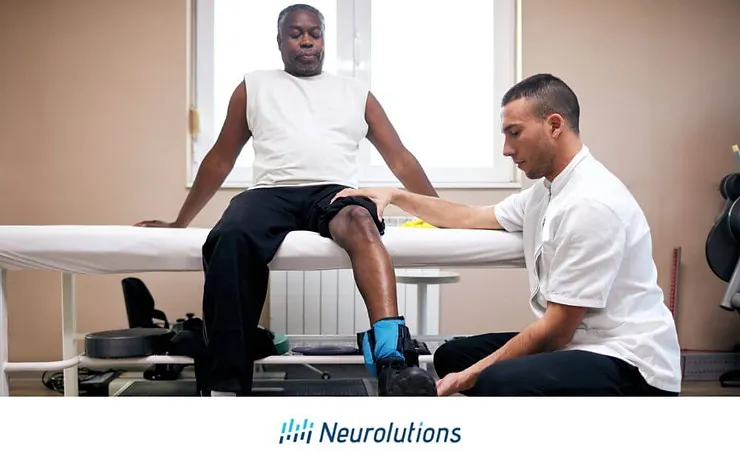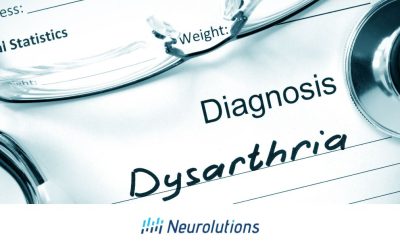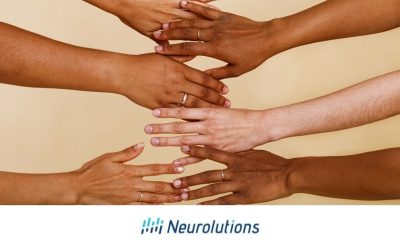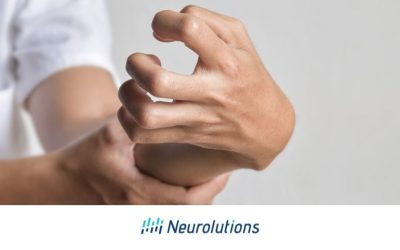The service and profession of physical therapy (PT), also called physiotherapy, seeks to build a community that improves the health of society (American Physical Therapy Association).
If you or a loved one had a stroke that caused disability related to functional mobility, walking, balance, or pain, hopefully, a physician ordered physical therapy to help you recover and relearn skills you have lost because of your stroke.
Physical therapy evaluation and intervention are incorporated best practice guidelines for stroke rehabilitation throughout the continuum of care (1, 2).
If for some reason you are on the fence about whether or not to start physical therapy or re-enroll in physical therapy after you have had a stroke, this article highlights 8 Convincing Reasons to see a Physical Therapist if you have had a stroke. Some of these reasons may surprise you, beyond the obvious
Get Moving With Physical Therapy
When you have had a stroke or if you are in pain, you may resist moving. It is important, however, to move- even if you have to move little by little. Moving more will help get you back in the game. Not only is moving your body believed to make new or restore pathways that may have been damaged in the stroke, but it also builds muscles, and stronger bones, and increases your tolerance to the demands of activities that make up your life.
A physical therapist will help you work to regain the function and movement you lost after your stroke. As appropriate, a PT will help work on transferring to different surfaces of the home, train gait and balance and gait, practice climbing stairs, initiate stepping over obstacles, and walk on different surfaces. A general aim of PT is to increase independence, reduce reliance on other people for help, promote wellness, manage pain, and promote safety throughout life tasks.
Prevent Future Stroke and Ailments
While PTs are effective at treating ailments, conditions, and injuries that are already set in motion, modern physical therapy practice integrates prevention, health promotion, and wellness to support a healthy lifestyle.
Why is this an important consideration if you are in care because of a stroke? Although it is understandable why stroke survivors ask their physical therapist to “fix” their impairments to resume the life they lived before their stroke, this is short-sighted.
In the days and months that pass after a stroke, it is critical to address the root of the problem to prevent another, potentially more devastating stroke. The entire care team- including the survivor- will need to examine why the stroke may have happened in the first place.
Here is the good news: Stroke research suggests that more than 90% of strokes are associated with 10 potentially modifiable risk factors (O’Donnell et al., 2016). A handful of the modifiable risk factors associated with stroke may improve as a result of physical therapy interventions and recommendations. These modifiable risk factors include lack of physical activity, high blood pressure, obesity, diabetes, poor diet, and smoking.
A physical therapist will counsel and support stroke survivors and their care partners to engage in healthy behaviors to mitigate the risk factors of having another stroke. The value of preventative care coming from a physical therapist also supports secondary problems that arise from having a stroke (e.g. exercise and activity combat depression, joint and muscle pain, etc.)
Get New Skills, Wisdom, and the Support Of A Great Coach.
Oftentimes, a physical therapist has the persona of a coach, holistically supporting the individual and their care partner on both good days, bad days, and everything in between. PTs have a job to do, and that is to provide intervention for growth and development along the recovery journey after a stroke so the survivor can meet- or exceed! – their maximal potential.
A great coach can make all the difference between getting average results to getting extraordinary results.
Accelerate Your Recovery With the Knowledge of Physical Therapists
Physical therapists experienced and potentially credentialed in stroke and neurological rehabilitation will prioritize your care plan and ensure that your time and effort are placed on the right exercises and activities to help you recover as fast as the brain and body will allow. Whether you are seeking PT services in a nursing facility, rehabilitation center, home health, or outpatient therapy, it pays off to inquire to the agency about the training and experience of their staff.
If you have had a stroke and you do not have access to a facility that specializes in stroke rehabilitation but you can find a physical therapy clinic that will still accept your diagnosis and level of abilities, telerehabilitation services are becoming more common around the country. Some stroke survivors have enrolled in telerehabilitation to learn from stroke rehabilitation expert therapists to get a jumpstart on their recovery.
Be sure to look on the internet for videos, blogs, and websites that focus on stroke rehabilitation. You will notice that many physical therapists are providing open-access education on strategies for stroke rehabilitation. As a disclaimer, they are not legally overseeing the care of any viewer and cannot be responsible in the event of an injury, accident, adverse event, etc.
PTs Will Push You (In A Good Way!) When You Can’t Do It On Your Own.
It is HARD to recover after a stroke. It can take a toll on a person physically, emotionally, and mentally.
When a person appears to lack the physical strength to accomplish a task, the physical therapist will “push” the individual using skillful techniques (i.e. verbal words or feedback, manual (physical) cues, and many other strategies).
Likewise, when an individual doesn’t have the emotional strength or capacity to persevere through one repetition, one session, or the long road ahead, a PT will always listen for understanding. However, they are going to advocate and encourage the individual and care partners to “fight on.” It is important to frequently hear words of encouragement to develop a mental fortitude that will undoubtedly help the stroke survivor eagerly participate in both rehabilitation and everyday life tasks.
Get More Attention with Regular Visits to a PT
You will end up seeing your PT more often than you see your physician. Think of this as a major benefit to ensuring that you or your loved one is being regularly monitored by a healthcare professional that understands complex and often fragile conditions.
Several individuals post-stroke continue to have concerns that could spell trouble and require urgent medical attention. A few of the many examples include a history or presence of deep vein thrombosis (DVT), seizures, urinary tract infections (UTI), atrial fibrillation (a-FIB), vertebral artery stenosis, and blood pressure problems. Additionally, those who have balance problems post-stroke are more likely to fall, so it is not uncommon for the physical therapist to be the first healthcare professional that evaluates them when the individual arrives at their session and reports that they had a recent fall.
PTs are well trained to not only be on the lookout for signs of another stroke, but they are also skillfully observant of warning signs of other comorbidities that warrant prompt medical attention. PTs have an oath of responsibility to report problems to the patient’s physician to receive further direction, or to go to the emergency room if needed.
In other words, PTs are often regarded in health care as being successful at saving lives due to their attention and rapid response to concerning medical problems- especially in the neurological practice field.
Use Cutting-Edge Resources To Help You Get Better, Faster.
While dependent on resources available at certain facilities, physical therapists may utilize advanced technologies to improve mobility, restore strength, and increase limb awareness and positioning, and sensation.
Why is it important to consider the use of therapies in your program? There are several principles backed by evidence that support the use of advanced technology in neurorehabilitation.
Overlaying technologies with rehabilitation interventions may offer:
- Massed practice or repetitive practice. “Repetition matters.”
- High dose and duration. “Intensity matters.”
- Task-specific and goal-oriented practice. “Specificity matters.”
- Opportunity to practice in different ways (i.e. structured, distributed, randomized, variable).
Following clinical reasoning, training under different conditions promotes the retention of skills, learning, and automatic carryover.
General examples of these technologies include:
Virtual Reality:
Through immersion of video games and computers while doing a task, VR programs for stroke rehab are designed to enhance conventional therapy by providing a tool to deliver specific, intensive, and motivating therapy while being provided real-time feedback on performance.
Functional Electrical Stimulation (FES):
Use of a device that activates muscles using electricity during a functional task or therapeutic activity. FES may help with performance and increase strength, but there is some evidence that FES may bypass brain dysfunction and restore the pathway to the benefits of getting a muscle to contract under the right circumstances, at the right time.
Robotics:
Devices powered by robotics worn over the impaired body and limbs act to provide feedback on limb movement as well as deliver high-intensity high repetitions within a treatment session or while worn during functional tasks.
Brain-Computer Interfaces (BCI):
A technology that gathers brain signals through sensors, analyzes those signals, and translates them for an output device to carry out the desired action. Brain-Computer Interface technology can be invasive or non-invasive, and it is used to rewire injured pathways in the brain to improve motor recovery or restore useful function to those affected from neuromuscular disorders, such as a stroke.
Non-Invasive Brain Stimulation:
Use of a weak electrical current or magnetic field over the scalp to influence the activity of neurons in the brain for recovery and enhanced function.
Have Fun While You Recover
It is a good-humored joke that the “T” in PT stands for Physical Terrorist rather than Physical Therapist. Sometimes, PTs and patients will make light of the situation by laughing over the thought of the PT demanding that the patient perform “torturous” exercises.
However, physical therapy sessions devoted to stroke rehabilitation can be viewed as an opportunity to make more progress…while having a little fun. This works only if you choose to see it that way.
How can PT be fun?
Physical therapists are in the business of health and human services, and they genuinely care about helping people. On a professional level, the rapport between the PT and the patient can be strong and fulfilling. If you enjoy seeing and learning from your PT, the sessions may be more enjoyable.
If you love a good challenge, your physical therapist will have a great time coming up with creative ways to work you during your sessions progressively. When you see a challenge as an opportunity to get better, your mindset may shift to craving challenge and stimulation. For many, this can be something that keeps interest high and therapy an engaging experience.
While some states permit enrollment in physical therapy without a physician’s prescription, if you have had a stroke, prior consultation and agreement with your physician are recommended. If you are looking for services in your area that offer physical therapy and take your insurance for stroke rehabilitation needs, make sure to investigate the location to make sure it is a good fit and that they have desirable staff and resources.
For information on physical therapy and stroke rehabilitation, check out these resources:
Stroke Rehabilitation Fact Sheet
Guidelines for Adult Stroke Rehabilitation and Recovery
Canadian Stroke Best Practices
American Physical Therapy Association
References
- Guidelines for Adult Stroke Rehabilitation and Recovery
- Canadian Stroke Best Practices
- O’Donnell MJ, Chin SL, Rangarajan S, Xavier D, Liu L, Zhang H, Rao-Melacini P, Zhang X, Pais P, Agapay S, Lopez-Jaramillo P, Damasceno A, Langhorne P, McQueen MJ, Rosengren A, Dehghan M, Hankey GJ, Dans AL, Elsayed A, Avezum A, Mondo C, Diener HC, Ryglewicz D, Czlonkowska A, Pogosova N, Weimar C, Iqbal R, Diaz R, Yusoff K, Yusufali A, Oguz A, Wang X, Penaherrera E, Lanas F, Ogah OS, Ogunniyi A, Iversen HK, Malaga G, Rumboldt Z, Oveisgharan S, Al Hussain F, Magazi D, Nilanont Y, Ferguson J, Pare G, Yusuf S; INTERSTROKE investigators. Global and regional effects of potentially modifiable risk factors associated with acute stroke in 32 countries (INTERSTROKE): a case-control study. Lancet. 2016 Aug 20;388(10046):761-75. DOI: 10.1016/S0140-6736(16)30506-2. Epub 2016 Jul 16. PMID: 27431356.




